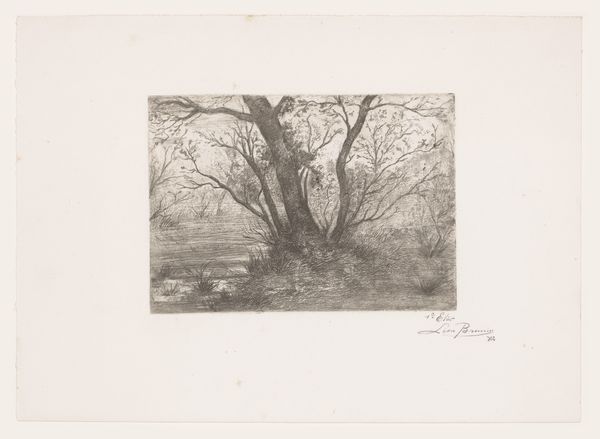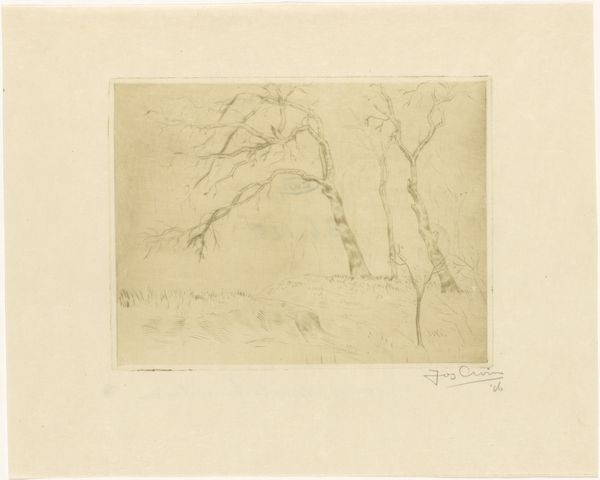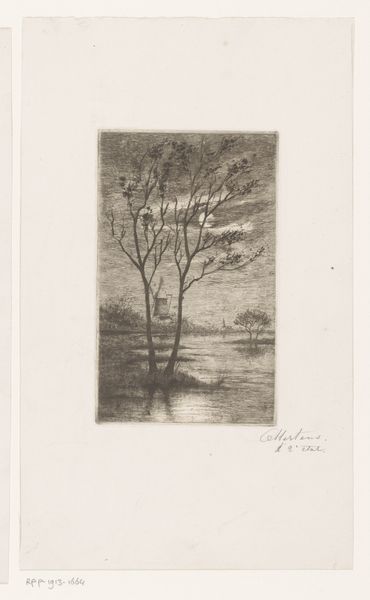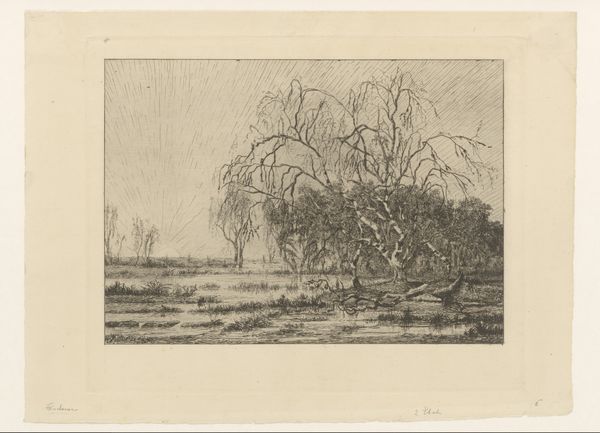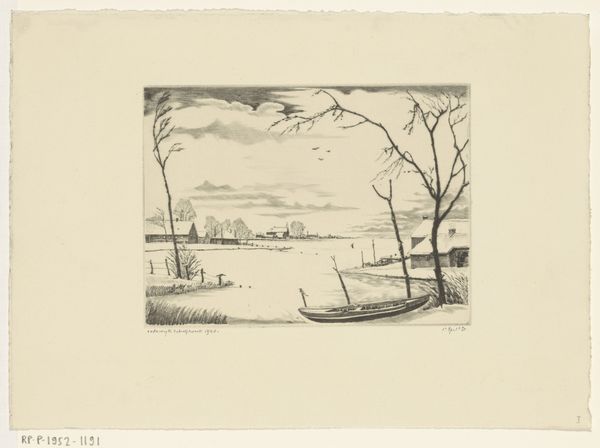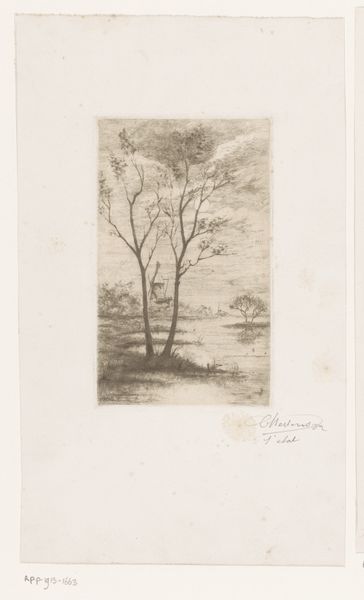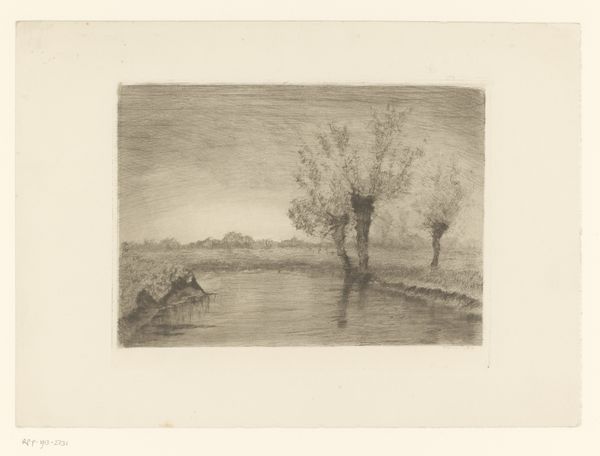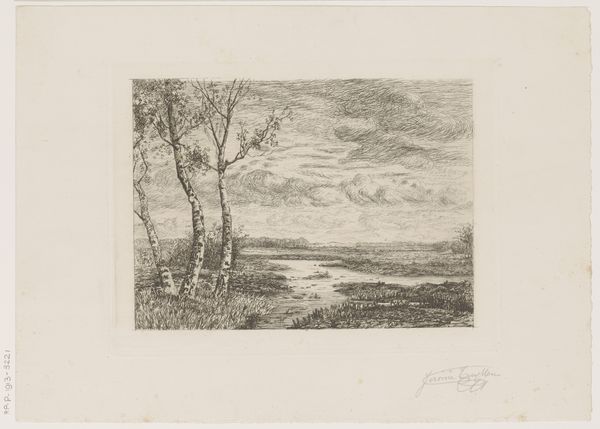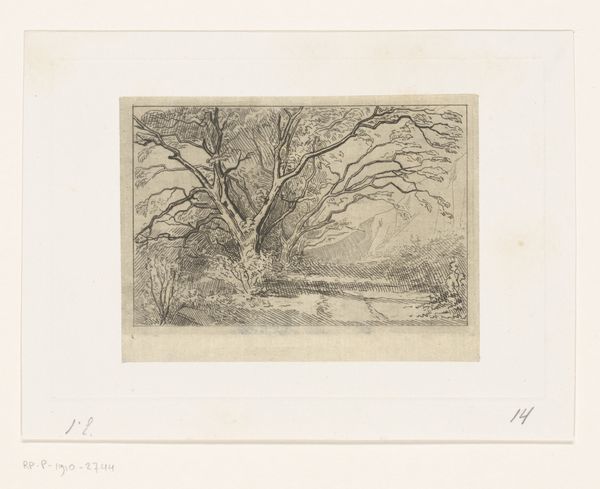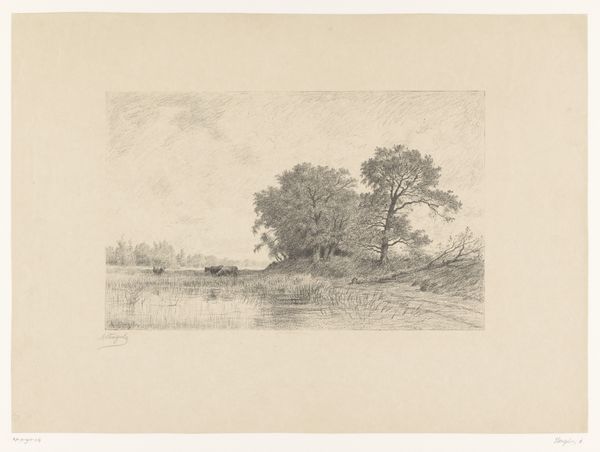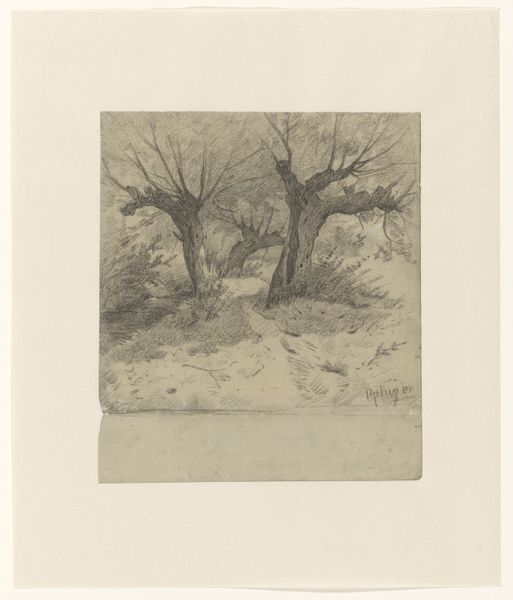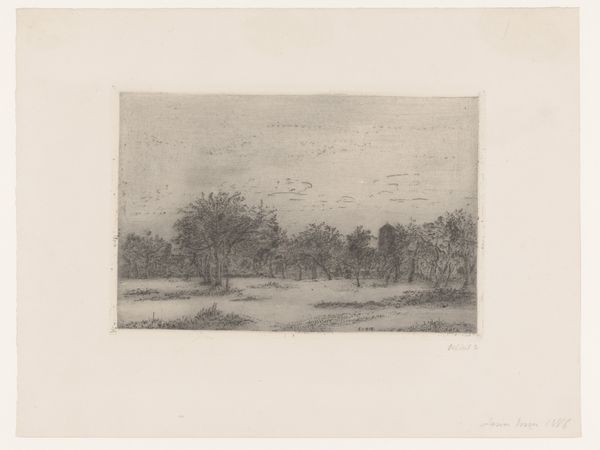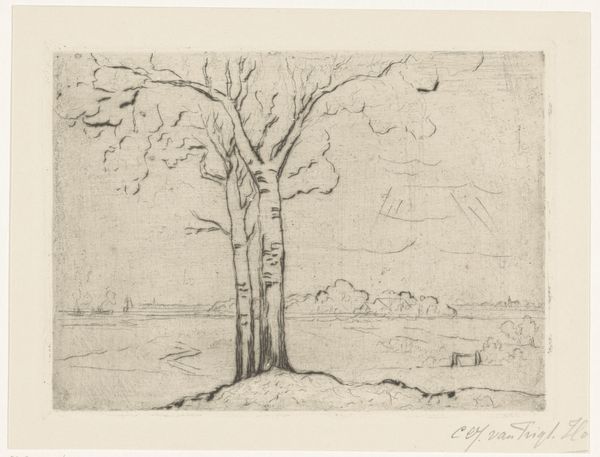
drawing, print, etching, paper
#
drawing
# print
#
etching
#
old engraving style
#
landscape
#
paper
#
realism
#
monochrome
Dimensions: height 214 mm, width 201 mm
Copyright: Rijks Museum: Open Domain
Curator: Let’s take a moment to consider "Landscape with pollard willows and two birds in the reeds", a print by Theodoor Hannon, likely created between 1861 and 1910. Editor: Immediately, I’m struck by the texture. It's almost tactile, despite being a monochrome print. You can feel the wind through the etching, the chill in the landscape just by looking at the cross-hatching. Curator: Yes, the etcher's line really animates the scene, doesn’t it? This work fits into a broader interest in rural life, something artists were exploring as industrialization changed society. Prints made art more accessible and catered to new markets eager to have views of landscape available to view in their home. Editor: Definitely. And you can tell by the medium it's intended for broader appeal. The paper support emphasizes its practical role, more than just high art on display. How do you see the choice of etching influencing our interpretation of the scene? Curator: Well, etching allowed for relatively easy reproduction, making Hannon's landscapes more widely distributed and consumed. It catered to a growing middle class wanting a taste of the countryside. Editor: I also find the subject choices so interesting. It is just knot willows and reeds. Nothing extraordinary, yet he makes them monumental through detail. I am curious about how artists obtained etching plates and other materials and what labor practices made this work possible. Curator: Good point. The art market's expansion also affected the artist's choices, responding to increased interest in picturesque landscapes. And these humble landscapes really took off as consumers distanced themselves from increasingly crowded cities. Editor: Precisely. Hannon elevates everyday life and shows nature prevailing in the face of these encroaching changes, demonstrating a material tension reflected by societal pressure. The final composition then serves as both an expression of craftsmanship and cultural ideology. Curator: It’s fascinating to view Hannon's print through these intertwined lenses. Considering the materials used alongside the social conditions gives such rich insight. Editor: I agree. Thinking about materiality enriches our appreciation, revealing stories of culture embedded in artistic production.
Comments
No comments
Be the first to comment and join the conversation on the ultimate creative platform.

